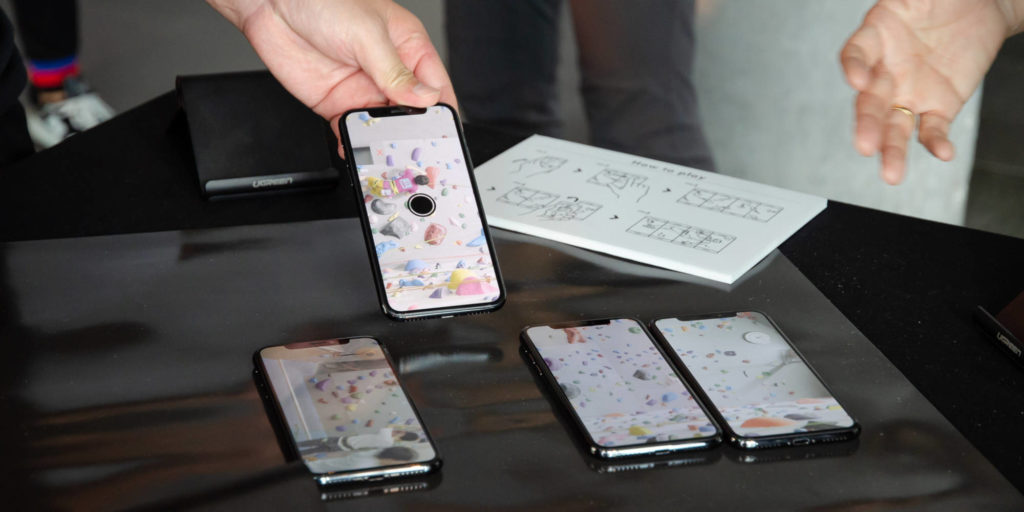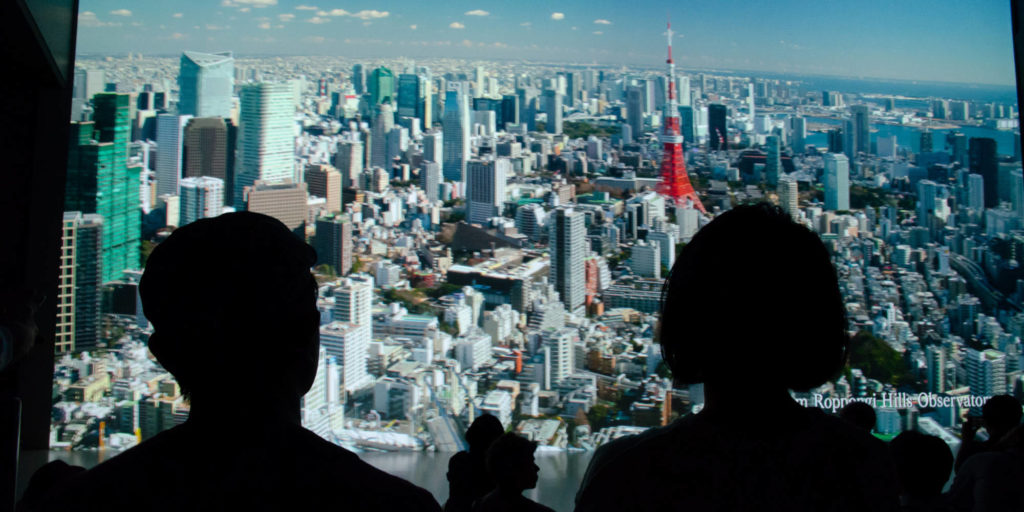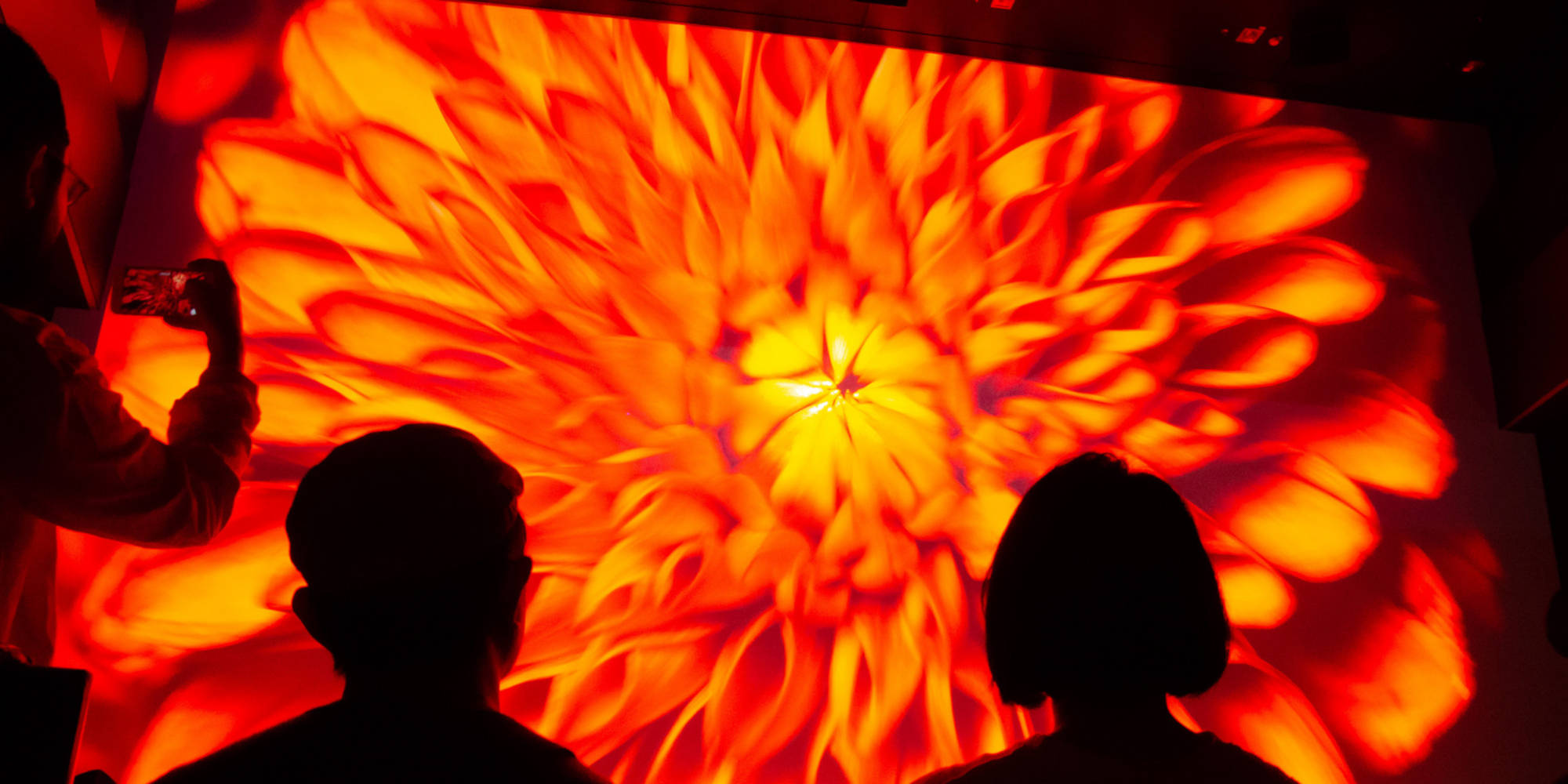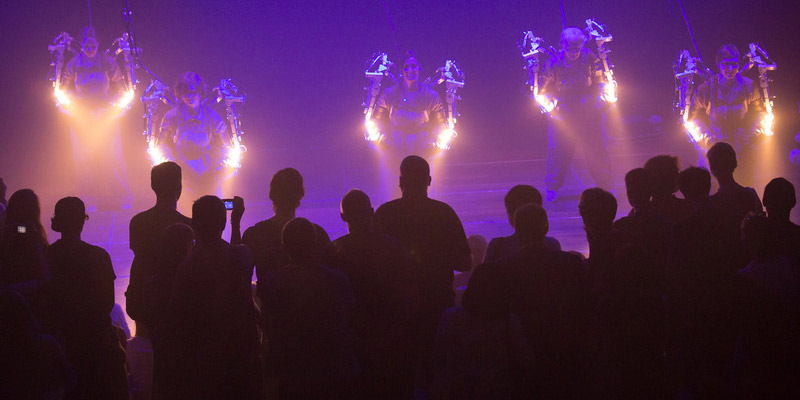NHK meets Deep Space 8K offers a glimpse into the joint research project between the Ars Electronica Futurelab and NHK, Japan’s largest public broadcasting organization.
They joined forces in 2017 to examine how 8K, the next generation of ultra-high definition TV technology, can be incorporated into daily life. The innovative broadcasting giant had already started creating and using 8K footage on a trial basis a year earlier, providing a resolution 16 times higher than Hi-Vision to its audience.

The research focuses on several key scenarios that reexamine modes of interaction with television content, ranging from a speculative high-resolution news program, novel interfaces or the employment of ambient media to a fresh approach to public viewing. The reflection upon incorporating 8K into the audience’s lives aims to help NHK tackle the biggest challenges to a widespread use of high resolution in public broadcasting.

At the 2018 Ars Electronica Festival, NHK and the Ars Electronica Futurelab present three of NHK’s original 8K contents at Deep Space 8K.
Tokyo – The Luminescent Megacity takes the audience on a flight in 8K over the megacity at nighttime, providing spectacular views in astounding resolution. The stop-motion animated DOMO WORLD invites viewers to discover a complex, miniature world, where Domo, NHK’s official mascot, bustles around the screen performing various activities. The animation consists of 16 separate Hi-Vision scene shots, stitched together to create an 8K experience full of details and wonder.

Lastly, 8K TECHNE engulfs the audience in an experimental TV program. To create the series of unique high-resolution videos, five artists were asked to express themselves artistically in 8K:
Fuyu Arai used 1024 human-like figurines and individual spotlights to create the spatial animation 1024.
Koki Sone turned natural stones into planets and lets the viewers travel through a universe made of ordinary objects in Cosmos under Foot.
In Harka Furuya’s The Window, seven actors perform behind a frosted glass and transform the TV screen into a window from the performer to the audience.
Koichiro Tsujikawa plays with video feedback in 88888888•••K, showing endless loop movies of a camera pointed at its own playback video monitor. Finally, mimesis by Eiji Tanigawa impressively explores aesthetics of color in 8K technology by focusing on the sense of materials in the same color.
Credits:
project by NHK (Japan Broadcasting Corporation) + Ars Electronica Futurelab
Author: Vanessa Graf
Websites:


